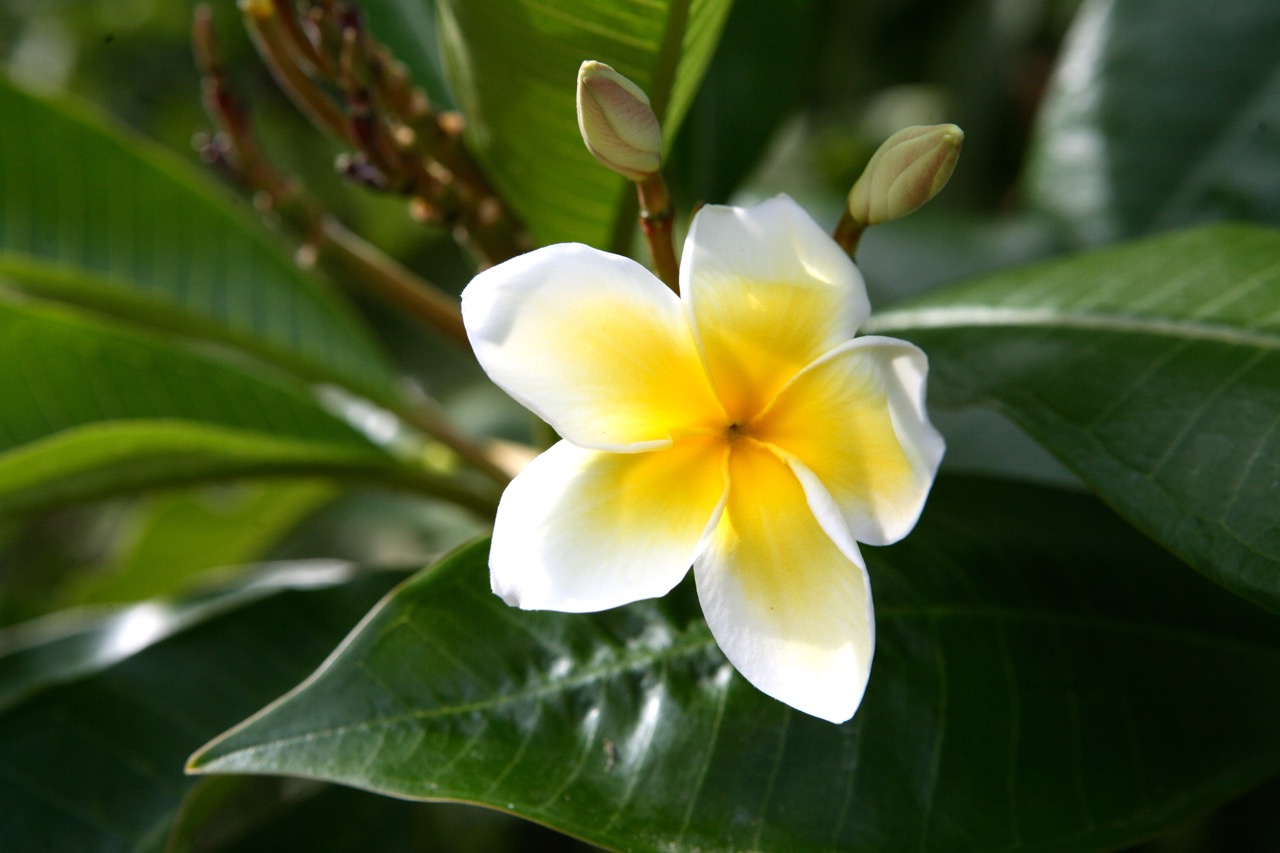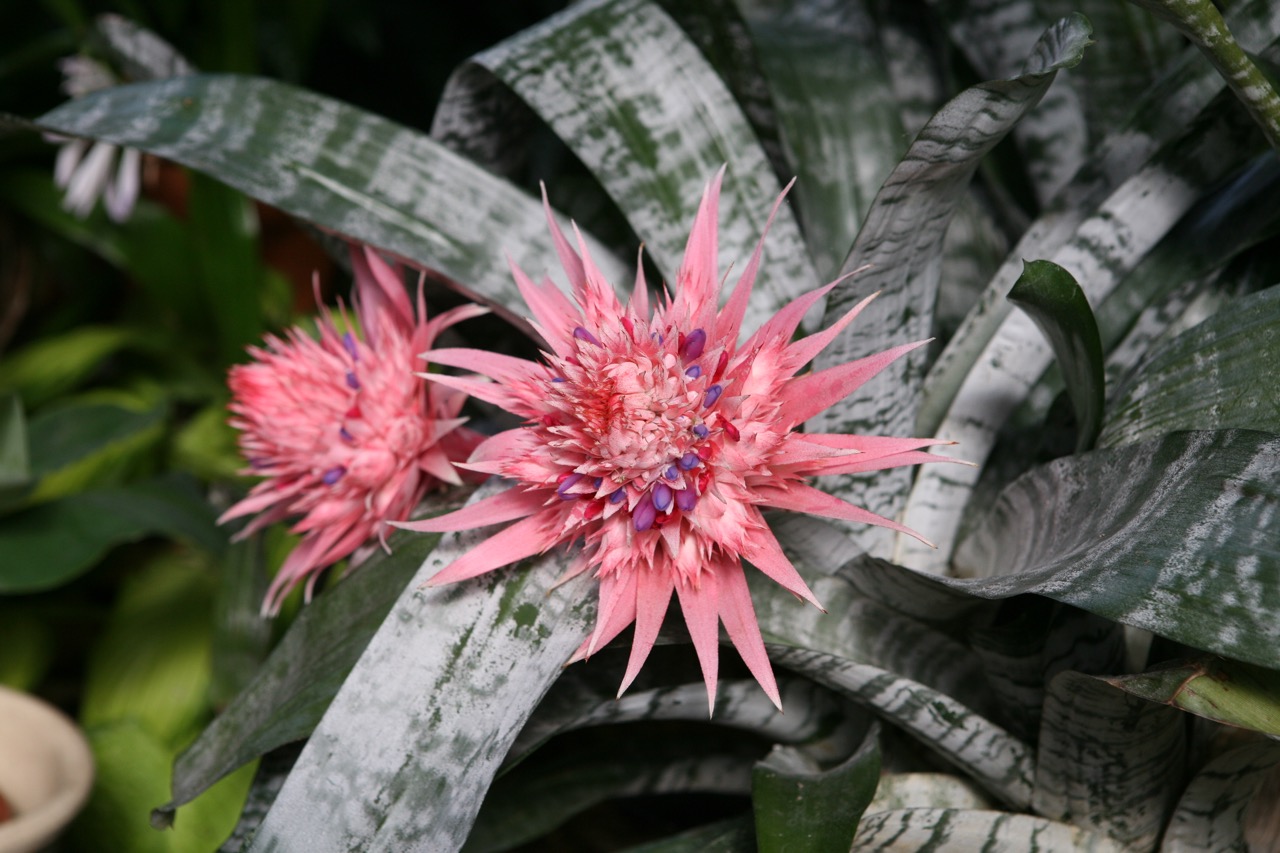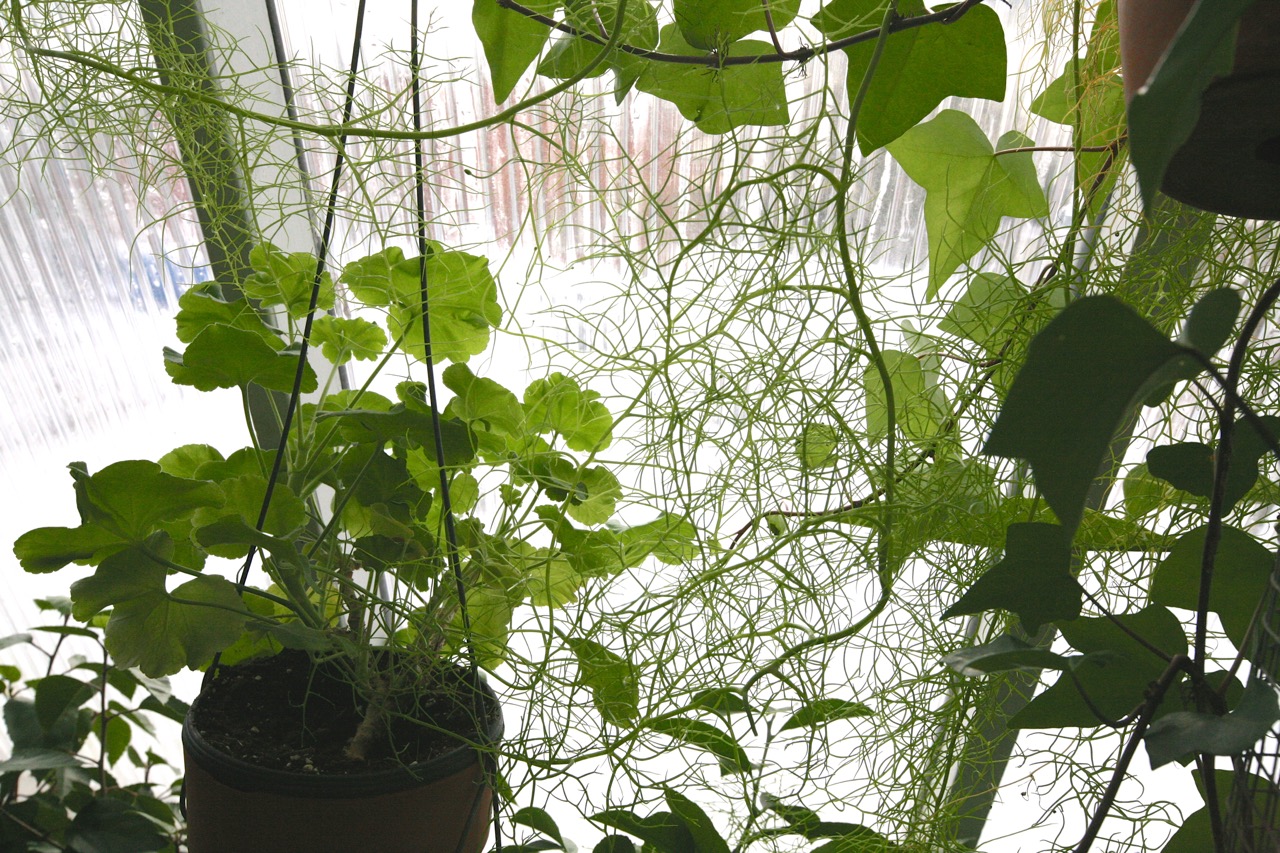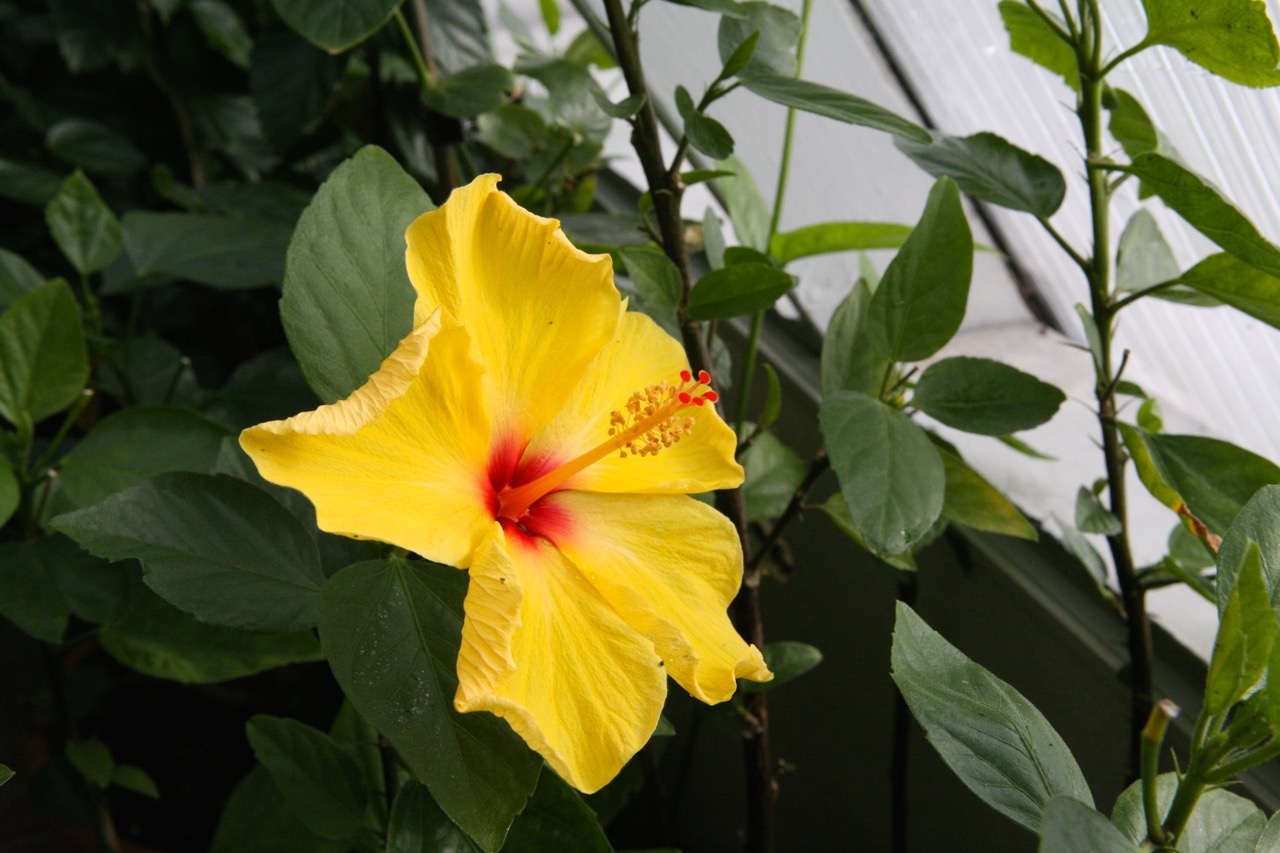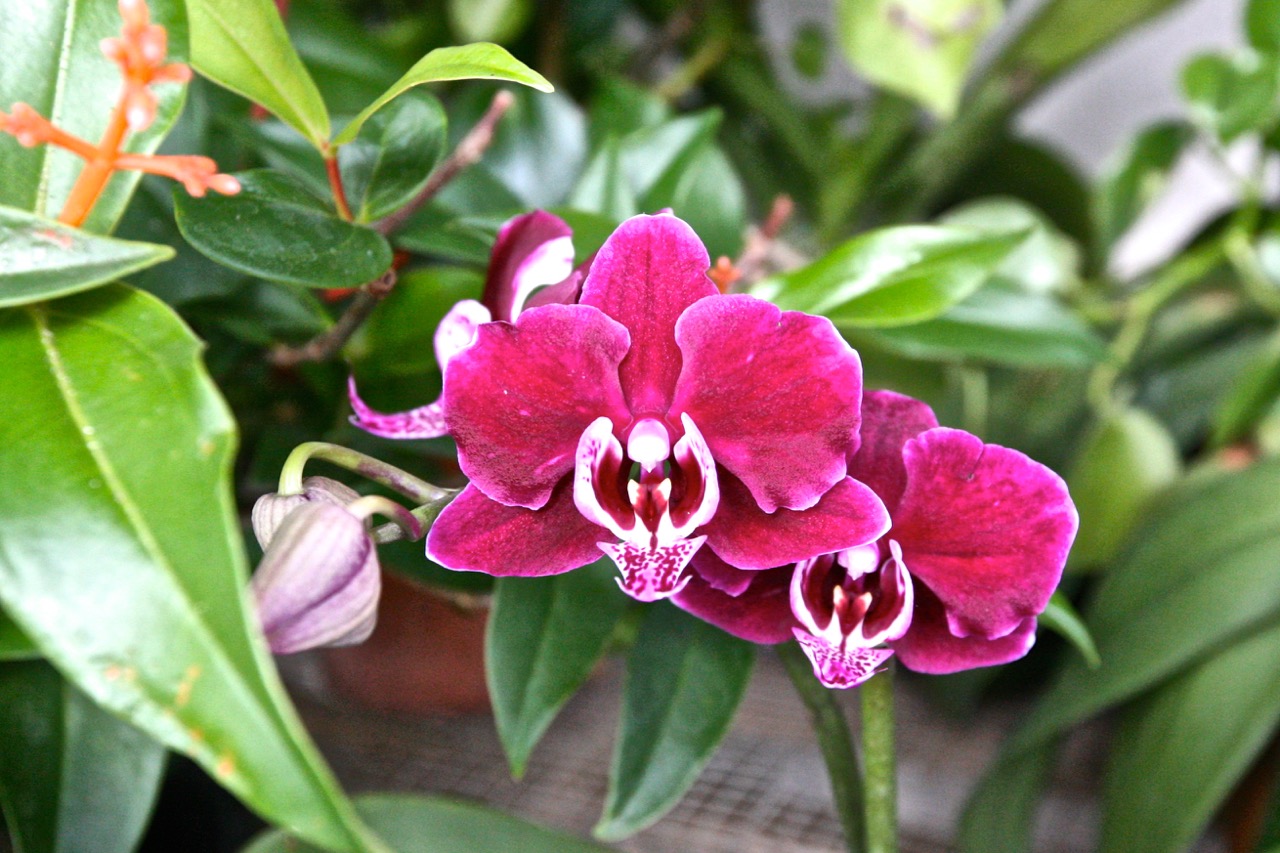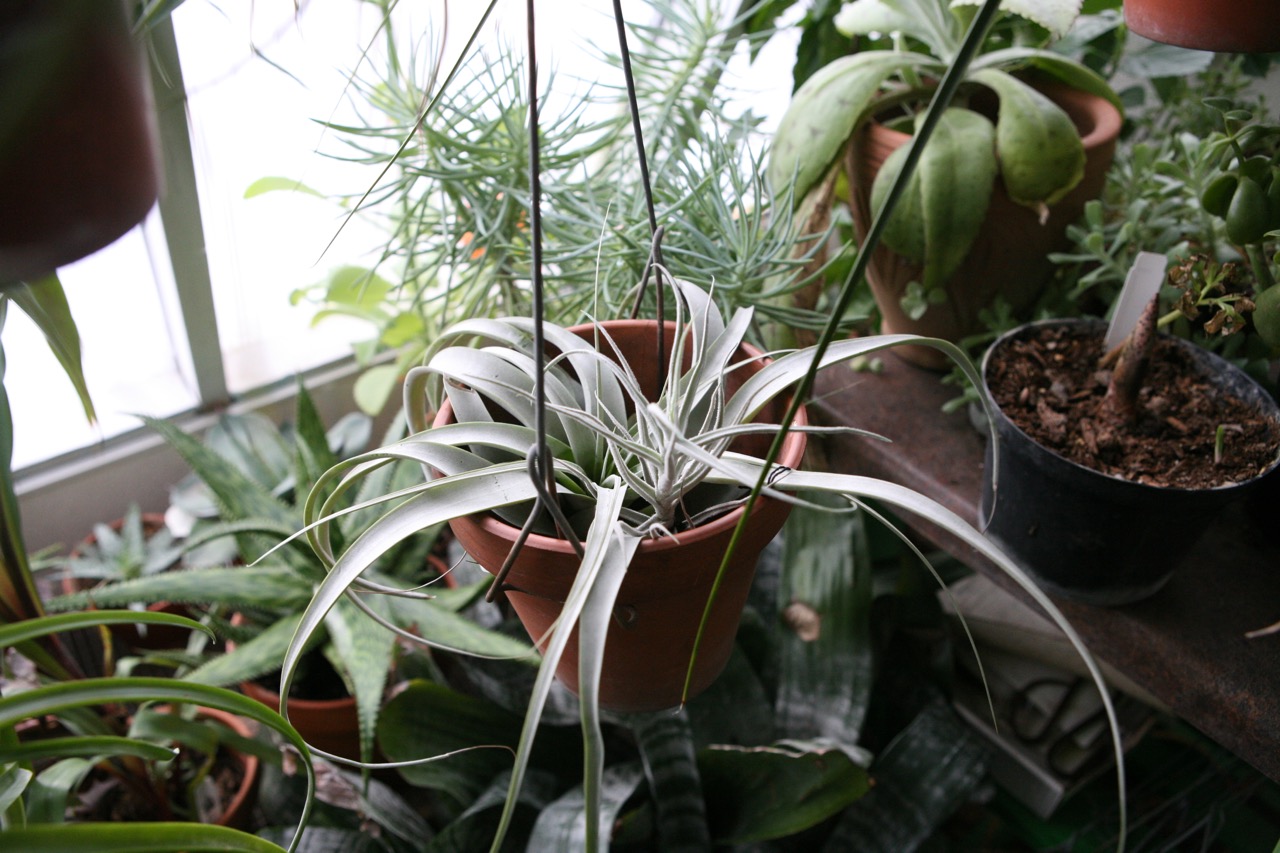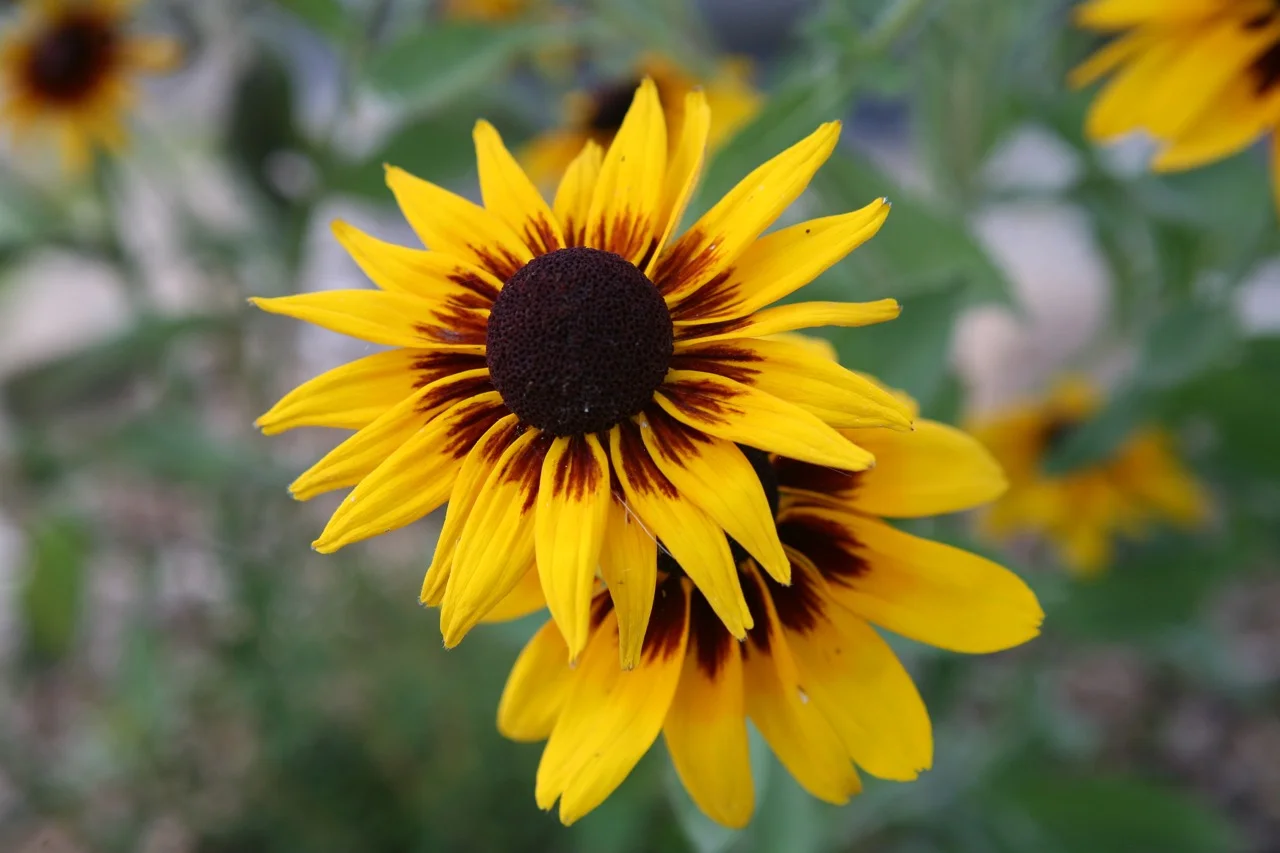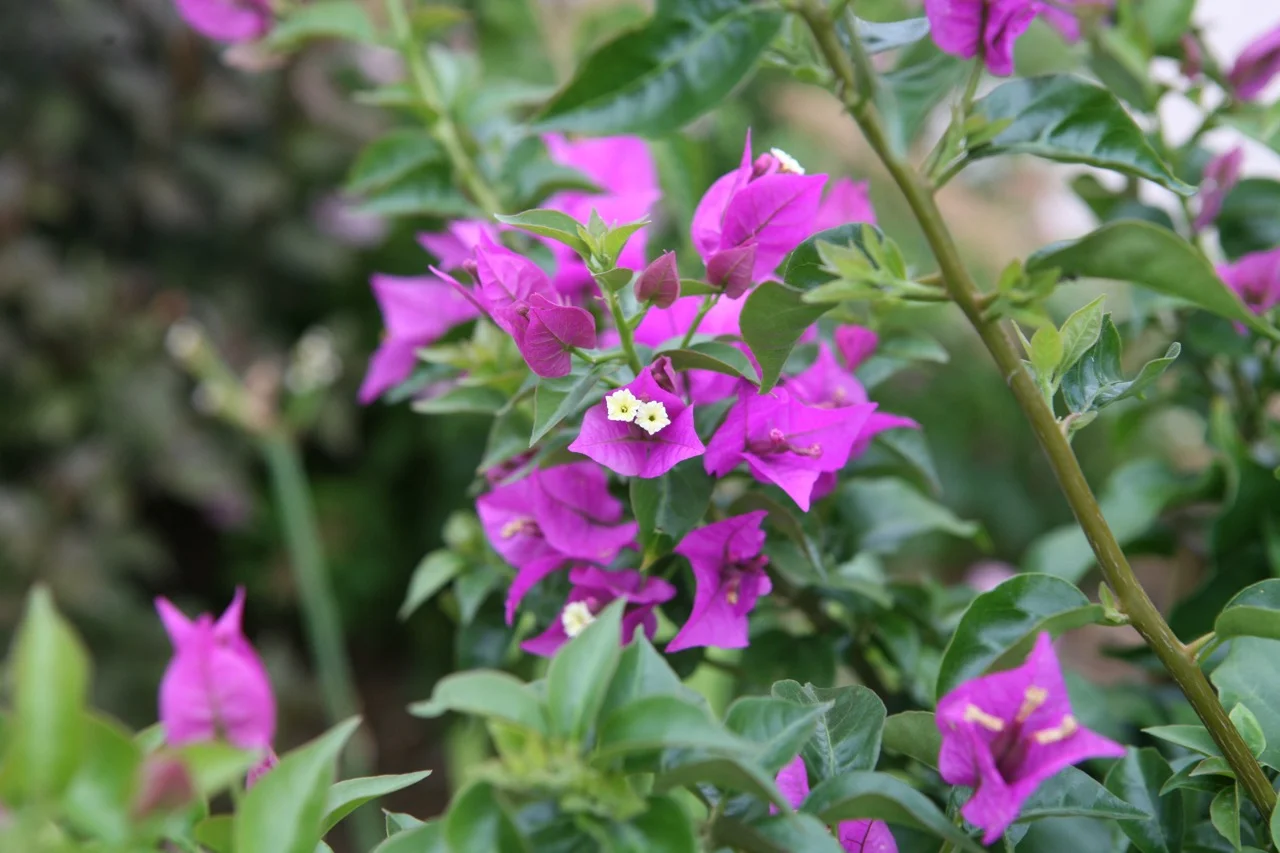Under a blanket of snow, Tom and Sue Brinkman’s yard blends in with the neighborhood. But in summer, their garden explodes into a unique tropical paradise. The only hint this time of year that their garden might be different is a greenhouse in back that is bursting with hundreds of exotic plants. These will be brought out when the weather warms, to light up their landscape with unusual shapes, hues, and textures.
I first met Tom and Sue at their “Houseplants and Containers” class, part of the Outagamie County Master Gardener program. Even from down the street their house stood out. The front yard, framed by flowerbeds, welcomed me with waves of color. Annuals such as coleus, begonias, and verbena mixed with hardy shrubs and perennials such as lilies, coneflower and daisy.
The Brinkmans designed their celebrated garden around a path. It leads through an intimate side garden, past a pond, through a woodland, to a seating area, and then to an outdoor fireplace. Stone, mulch and grass give each section a different feel.
A 60 year-old Sugar Maple anchors the back garden; its 90-foot high canopy is dramatic. “To add interest at the base, we surrounded it with Virginia Creeper which also makes the tree feel older. The birds and squirrels love to play in it.”
Ornaments include several Buddha, a lantern, and prayer bells inspired by Japanese design
What makes this garden unique is how exotics are integrated into the garden. Tropical plants are displayed in groups on the ground, arranged on benches, and hung on walls and tree branches.
Tom and Sue also plant 25 massive containers. Tom explained, “we used to create 50 planters, but cut that back and we have been simplifying them. We actually found that this works better.”
Collectively these design elements create an immersive, playful, and exciting experience from the ground up. The Brinkmans have developed a fearless, adventurous approach to gardening in zone 4.
What makes this all possible is the greenhouse that they put in 20 years ago. “With hundreds of exotic plants to care for in the winter we got tired of climbing through a jungle to get from the bed to the bath. So we designed an affordable greenhouse set along one side of our property where the light is optimal.”
The Brinkmans are continuing a garden tradition that started with Italian renaissance “orangeries” used to over-winter citrus trees in the 1500’s. Later, Victorian glass houses were used by plant hunters to cultivate exotics found in their voyages around the world
During my recent visit, the outside temperature was 4 degrees. Dressed in a T-shirt and sandals, Tom gave me a tour of the greenhouse. I expected to keep my coat on, but he stopped me, “You won’t need that. Despite the bitter cold, the greenhouse will be 70 degrees.”
Inside, hundreds of plants covered tiered shelving and hung from the ceiling. “These are Meyer Lemons, here’s our climbing onion, and there the hibiscus – the aphids love them!”
Tom’s favorites are the bromeliads. “They are easy to grow and have the most fascinating colors and textures.”
The Brinkmans visit new nurseries wherever they travel, and rely on a few trusted catalog sources. “Fortunately, local growers have started to expand their tropical offerings so that more people can get into this.” For these seasoned gardeners, “Finding a plant that has an unusual shape or color is really thrilling.”
Tom makes exotics seem easy. His approach combines deep horticultural knowledge with ways of integrating plant care into life’s routines. For example, “even though one side of the greenhouse is drier than the other, every plant gets watered the same day. The secret is to have good drainage. Then they’ll be ok.”
He advises gardeners not to “be afraid to start with smaller plants. There is something special about seeing things grow.” And he warns, “Don’t transplant too much. If a plant is happy where it is why stress it out. I learned this the hard way.”
Twice a year Tom and Sue reflect on what’s next for the landscape. Tom tries new things, while Sue edits to increase the impact of the various compositions.
Through their unique garden, Tom and Sue fill us with inspiration: they show us what is possible. And they share techniques that give us access to the tropics without leaving home.
Happy gardening!

